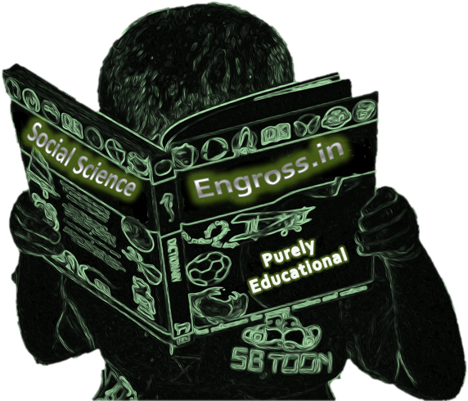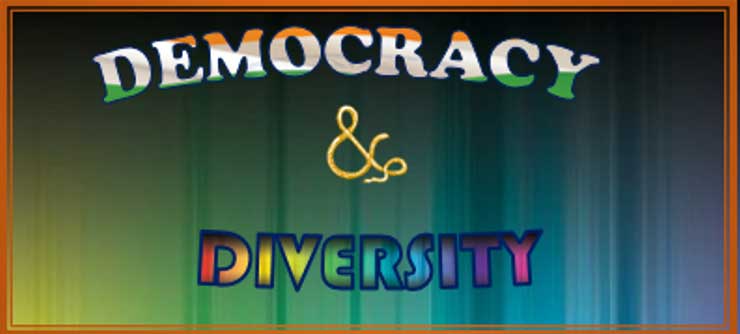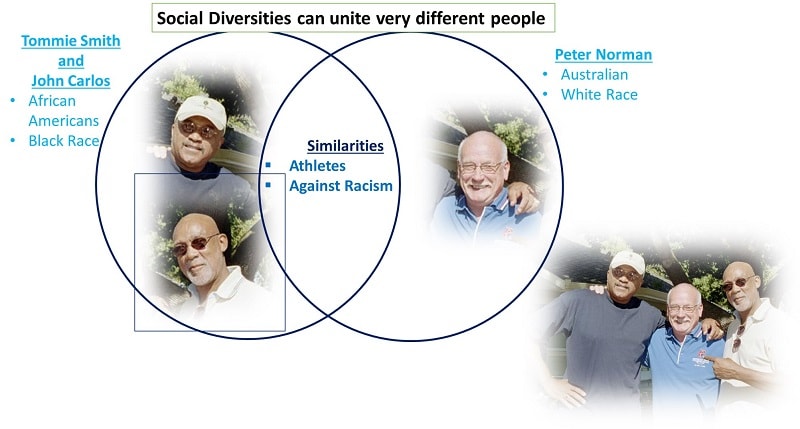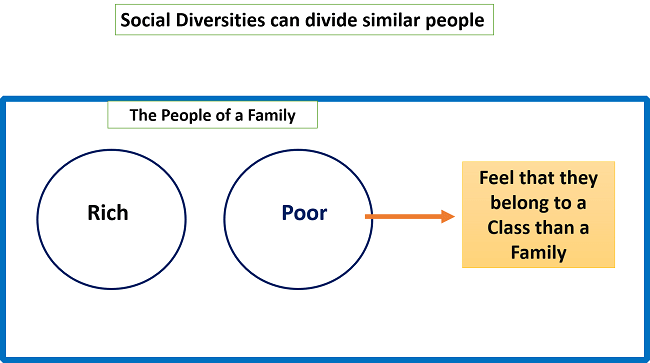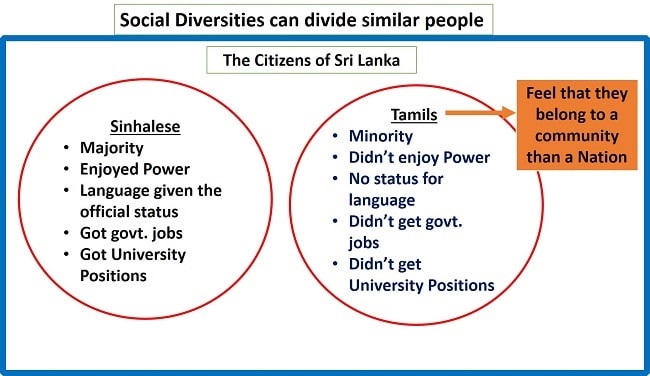This lesson is there only for the School Test. It will not be there for the Board Exam
- Civil Rights Movement in the USA: A Movement aimed at abolishing legal racial discrimination against African Americans. It was led by Martin Luther King Jr. This Movement practiced non-violent methods of civil disobedience against racially discriminatory practices and laws.
- Black Power Movement: This Movement emerged in 1966 and lasted till 1975. It was a more militant anti-racist movement. It didn’t hesitate to use violence if necessary to end racism in the USA.
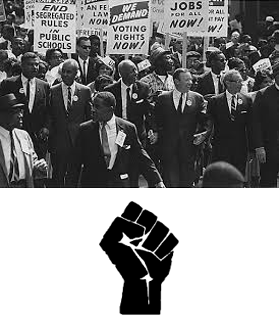
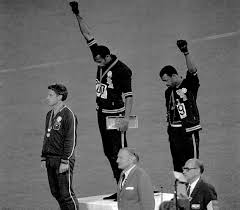
The Story of the Mexico Olympics of 1962: How the Black Power Movement found its way.
- In the 200 metres running race, a US athlete Tommie Smith won Gold Medal.
- Another US athlete John Carlos won Bronze medal.
- An Australian, Peter Norman won Silver Medal.
- The three athletes decided to highlight racism practiced in the USA.
- The US athletes decided to express their support for the Black Power Movement.
- The US athletes received their medals wearing black socks and no shoes to represent Black Poverty.
- The black gloved raised clenched fists were meant to symbolize Black Power.
- The Australian athlete, Peter Norman, expressed his support for the African American athletes by wearing a human rights badge on his shirt.
What happened Next?
- The International Olympic Association held the African American athletes guilty of violating the Olympic spirit by making political statement.
- Back in the USA, these athletes were subjected to a lot of criticism.
- Peter Norman was not included in the Australian team in the next Olympics.
- When Peter Norman died in 2006, the two African American athletes were the Pallbearers at his funeral.
Differences, similarities and divisions
Diversities take different forms in the different societies

- Social diversities exist in every society in one form or the other.
- Social diversity takes different forms in different societies.
- In the USA, it takes the form of race and number (Here number means division of the society into Majority Social Group and Minority Social Group)
- In Belgium, it takes the form of language and number.
- In Sri Lanka, it takes form of language, religion and number.
- In India, it takes the form of language, religion, number, region etc.
- By the way, Gender is the universal social diversity as well as social division in some societies.
Origin of Social Diversities
- Based on Birth: Most social diversities are based on a person’s birth. Gender, religion, caste, language group are examples of it. A person doesn’t choose his language, religion or caste when he/she is born. He / She is simply born into such a family. It is the simple case of accident of birth.
- Based on Choice: Some social diversities are based on a person’s choice. Some people don’t believe in God. Some change their religion. Many of us decide what to study, which occupation to take up or cultural or games activities to take part in. These are based on a person’s choice.
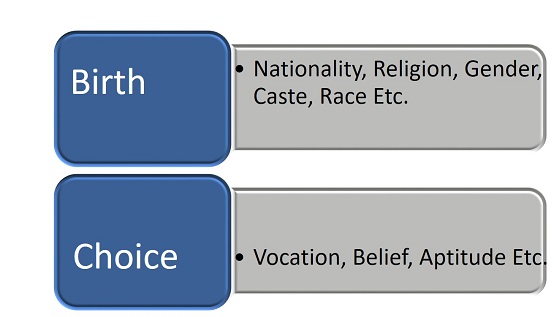
Diversities can unite very different people but can also divide very similar ones
Click on the images to see examples
- Not all social differences leas to social division.
- People belonging to different social groups have similarities and differences cutting across social differences.
- Similarities bring people together even though they belong to different social groups.
- Tommie Smith and John Carlos are African Americans, and Peter Norman was an Australian. All of them united despite the different race and country they belong to.
- The fact that they were athletes and all of them were against racism united them.
- It is common to find rich and poor people in an extended family.
- Usually the poor of the family group together and the rich form their own groups. Though they belong to the same family, the rich and the poor of the family may feel that they belong to different classes.
- It is the case with religious communities as well. People of the exploited caste group may feel that they belong to a different class/communities than that of the religious community.
Overlapping of Social Differences
- It is a situation where one social difference becomes more important than the rest.
- The African Americans in the USA are examples of it. The African Americans tend to be poor and discriminated. The fee that they belong to a class rather than the community of Americans. Here, that they are African Americans becomes more important than being the citizens of America.
- So are the Protestants and Catholics of Northern Ireland. The protestants tend to be rich and powerful. The Catholics tend to be poor and discriminated. The Catholics feel that they belong to a class rather than the community of Christians or the citizens of Northern Ireland.
- These examples show that, for a particular group of people, one social difference becomes more important than the rest.
- In this situation, a person develops singular identity.
- Overlapping of social differences is not easy to handle in Democracy.
Cross Cutting
- It is a situation where no social difference takes importance.
- Similarities crosscut social differences.
- In the Netherlands, both protestants and Catholics are equally likely to be rich or poor.
- For them, the social group that they belong to doesn’t matter.
- They are likely to consider themselves as Christians or citizens of Netherland.
- Cross cutting social differences are easy to handle in democracy.
- In this situation, a person has multiple identities.
Politics of social divisions
- How do social divisions affect politics? What does politics do to with social divisions?
- At first sight, it appears that combination of politics and social division is extremely dangerous.
- The competition among political parties divides any society.
- If political parties start competing in terms of existing social divisions, then, social divisions become political divisions.
- This may lead to conflict, violence or even disintegration of a country.
- Let us see what could happen if social division is expressed in politics.
Range of Outcome
- Northern Ireland is a part of the United Kingdom.
- The protestants constitute 53 per cent of the population and they are rich and powerful.
- The Catholics constitute 44 per cent of the population and they are poor.
- The Catholics were represented by Nationalist Parties. They demanded that Northern Ireland be united with the Republic of Ireland because, the Republic of Ireland is predominantly a Catholics country.
- The Protestants where represented by Unionists. They demanded that Northern Ireland remain the part of the United Kingdom. The basis of their demand was that the UK is predominantly protestant.
- In the strife that erupted between the social groups, hundreds of civilians, militants and security forces were killed.
- It was only in 1998, that the UK government and the Nationalists reached a peace treaty after which the armed struggle stopped.
- In Yugoslavia, the story did not have a happy ending.
- Political expression of social divisions resulted in the division of the country into seven independent countries.
- We tend to feel that political expression of social differences can push a country to the verge of disintegration or cause disintegration.
- These examples compel us to think that political expression of social division is not desirable.
Why is it desirable?
- Social divisions of one kind or the other exist in a most countries of the world.
- Wherever they exist, political representation of these divisions is common.
- It is common for political parties to make different promises to different social groups, look of the due representation of various communities and make policies to redress the grievances of the disadvantaged groups.
- Social divisions affect voting in the most countries,
- In many countries, there are parties that focus only on one community.
- But all these do not always lead to disintegration of the country.
- Political Expression of Social Division has given voice to many disadvantaged groups. They today enjoy political power.
- Thus, political expression of social division can be positive.
How the people perceive their identity
- If people have singular and exclusive identity, then the outcome would be negative.
- The People of Sri Lanka and Northern Ireland have singular identities. They were concerned about their social group. So, the outcome was negative.
- If People have multiple identities, then the outcome would be positive.
- The people of Belgium today consider themselves as Belgians first. The other social identity of linguistic group doesn’t matter now. So, the outcome has been positive.
- Most Indians today feel that they are Indians first. Then comes other identities
The three determinants of Politics of Social Difference
How the leaders raise demands
- If the demands raised by the political leaders are within the constitutional frame work of the country, then the outcome would be positive. The Belgian Model of Power Sharing is a good example of this.
- If the demands are beyond the constitutional frame work, then the outcome would be negative. This is what happened in Yugoslavia.
How the Govt. reacts to the demands
- If the Government is ready to share power with other social groups and accommodate all social groups, then the outcome would be positive. Belgium is an example of it.
- If the Government refuses to share power with other social groups and suppress their voice, then the outcome would be negative. Sri Lanka is an example of it.
One mark Questions
- Name the athletes who won the Gold, the Silver and the Bronze medal respectively in the 200 metres running race at the Mexico Olympics of 1968.
- In which University did Tommy Smith and John Carlos study?
- Who were the Pallbearers in Peter Norman’s funeral?
- Which are the origins of Social Diversity?
- Give an example to show that not all social differences lead to social division.
- What is Overlapping of Social Differences?
- What is Cross Cutting of Social Differences?
- When does social difference become social division?
- What happens when social division is expressed in Politics?
- What is a Homogeneous society?
Three mark Questions
Will be updated
Five Mark Questions
- Will be updated
